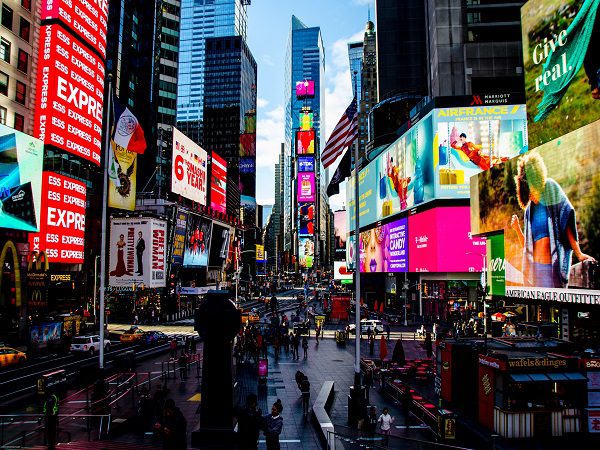Introduction
In the dynamic world of digital marketing, staying ahead of the curve is essential for businesses aiming to capture the attention of their target audience. One groundbreaking technology that has emerged as a game-changer in advertising is Augmented Reality (AR). Augmented Reality in ad campaigns is revolutionizing the way consumers interact with products, offering a unique and immersive experience that transcends traditional marketing methods.
The Rise of Augmented Reality:
Augmented Reality, often abbreviated as AR, is a technology that overlays digital information onto the real world. It integrates computer-generated images or content with the user’s physical environment, providing an enhanced and interactive experience. In recent years, AR has gained significant traction, thanks to its widespread adoption in various industries, including gaming, healthcare, and most notably, advertising.
Bringing Products to Life:
One of the most compelling applications of Augmented Reality is its ability to bring products to life in ad campaigns. Traditional advertising methods often rely on static images or videos, limiting the consumer’s engagement. Augmented Reality, however, bridges the gap between the virtual and physical worlds, allowing users to interact with products in real-time.
Imagine browsing through an online furniture store, and instead of merely viewing images of sofas and chairs, you can use AR to place these virtual pieces in your living room. You can see how they fit, check different color options, and even gauge their size – all through your smartphone or AR-enabled device. This immersive experience not only captures the consumer’s attention but also significantly influences purchasing decisions.
Enhancing User Engagement:
The success of any advertising campaign lies in its ability to engage the target audience effectively. Augmented Reality takes user engagement to new heights by offering an interactive and personalized experience. Instead of passively observing an advertisement, consumers can actively participate in the process, creating a memorable and enjoyable interaction with the brand.
For instance, cosmetic brands can leverage AR to enable customers to virtually try on different makeup products before making a purchase. This not only adds an element of fun to the shopping experience but also eliminates the uncertainty associated with online purchases. By enhancing user engagement, AR in ad campaigns fosters a stronger connection between the consumer and the brand.
Boosting Brand Awareness:
In the crowded digital landscape, standing out is crucial for brand success. Augmented Reality provides a unique and memorable way for brands to showcase their products, leaving a lasting impression on consumers. When a brand incorporates AR into its ad campaigns, it signals innovation and a commitment to providing a cutting-edge experience.
Take the example of a clothing brand using AR to allow customers to virtually “try on” clothes. This not only creates a more enjoyable shopping experience but also generates buzz around the brand. Users are likely to share their AR experiences on social media, amplifying brand visibility and reaching a wider audience. In this way, Augmented Reality becomes a powerful tool for boosting brand awareness and creating a positive brand image.
Measurable Impact with Analytics:
One of the key advantages of incorporating Augmented Reality into ad campaigns is the ability to track and analyze user interactions. Traditional advertising methods often struggle to provide accurate metrics on user engagement and campaign success. Augmented Reality, on the other hand, offers robust analytics that enable marketers to measure the impact of their campaigns effectively.
Marketers can gather data on user interactions, such as the time spent engaging with the AR content, the features used most frequently, and even the demographics of users participating in the experience. This valuable information allows brands to fine-tune their campaigns, understand consumer preferences, and optimize their marketing strategies for better results.
Overcoming Challenges:
While the benefits of Augmented Reality in ad campaigns are undeniable, it’s essential to acknowledge the challenges associated with its implementation. One of the primary hurdles is the need for users to have AR-enabled devices. However, as technology continues to advance, the prevalence of AR-capable devices is likely to increase, mitigating this challenge over time.
Another consideration is the cost involved in creating high-quality AR content. Developing immersive and realistic AR experiences requires skilled professionals and sophisticated tools, which may pose a barrier for smaller businesses. However, as the demand for AR content grows, we can expect a more diverse range of affordable solutions to emerge.
The Future of Augmented Reality in Advertising:
As technology continues to evolve, Augmented Reality is poised to play an increasingly prominent role in the future of advertising. The integration of AR glasses, advancements in AR software development, and the growing accessibility of AR-enabled devices will further propel the adoption of this technology in ad campaigns.
We can anticipate more creative and interactive AR experiences that seamlessly blend the virtual and physical worlds. Brands that embrace Augmented Reality early on will not only stay ahead of the competition but also connect with consumers in ways previously thought impossible.
Conclusion:
Augmented Reality in ad campaigns is ushering in a new era of marketing, where products come to life, user engagement soars, and brand awareness reaches new heights. The immersive and interactive nature of AR experiences captivates consumers, providing a memorable and enjoyable interaction with brands. While challenges exist, the future of advertising undoubtedly includes Augmented Reality as a central player, offering limitless possibilities for brands to connect with their audience in innovative and meaningful ways. As technology advances, the impact of Augmented Reality in advertising will continue to grow, shaping the way businesses promote their products and engage with consumers. Embracing this transformative technology is not just a choice; it’s a strategic imperative for brands looking to thrive in the ever-evolving landscape of digital marketing.



































